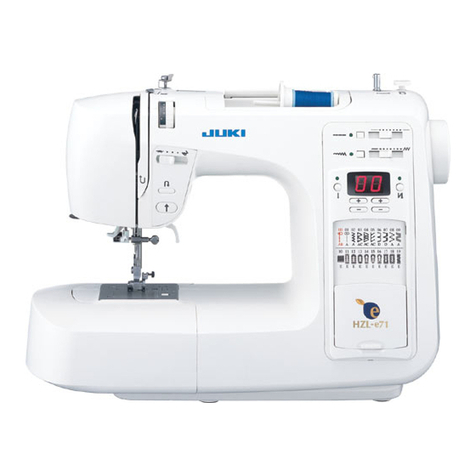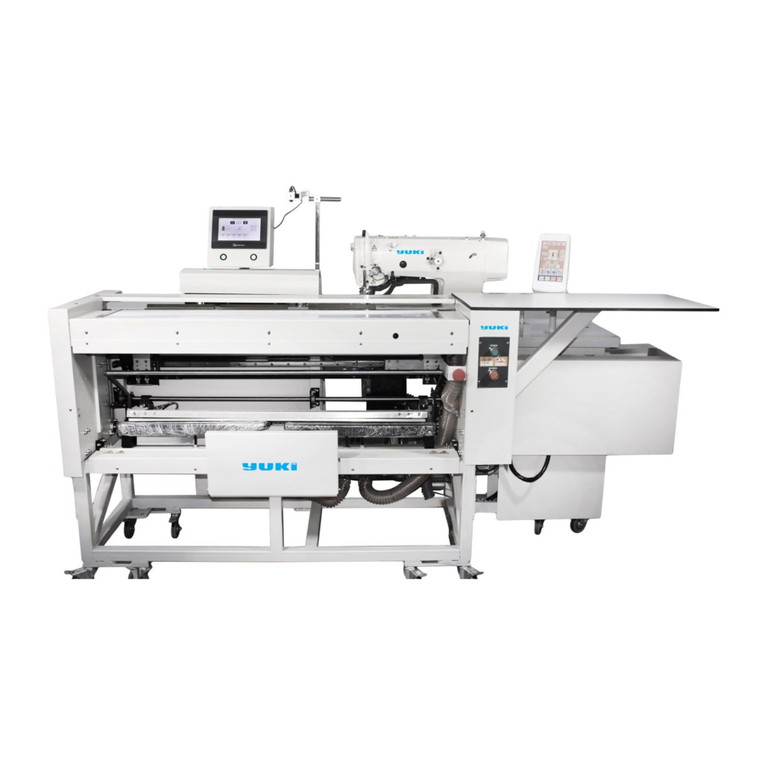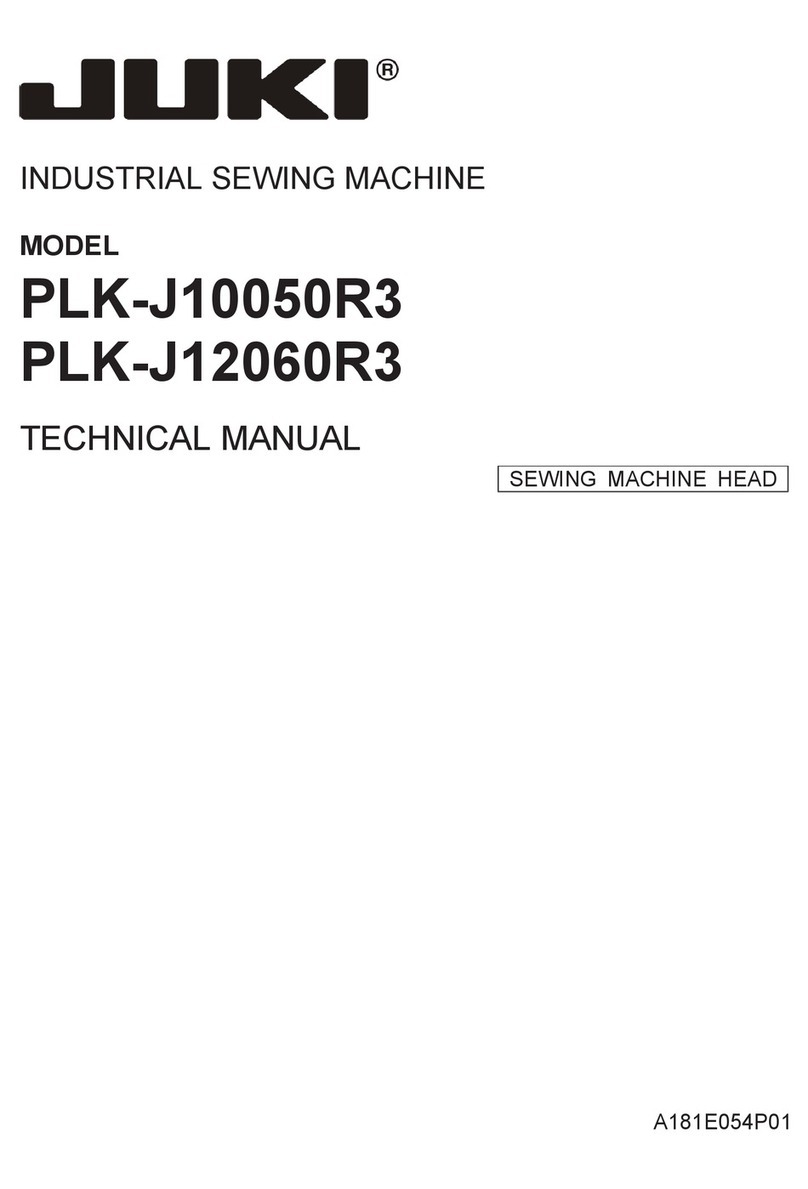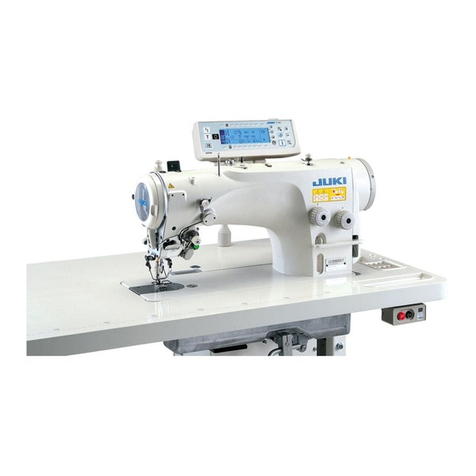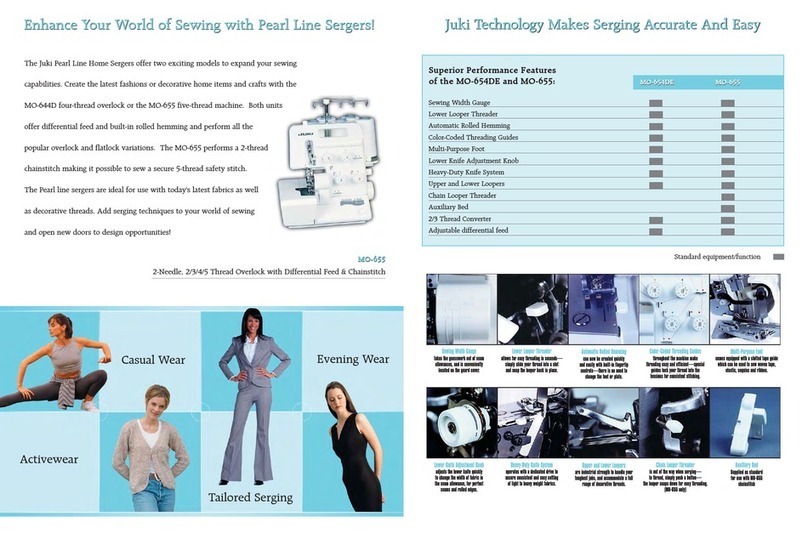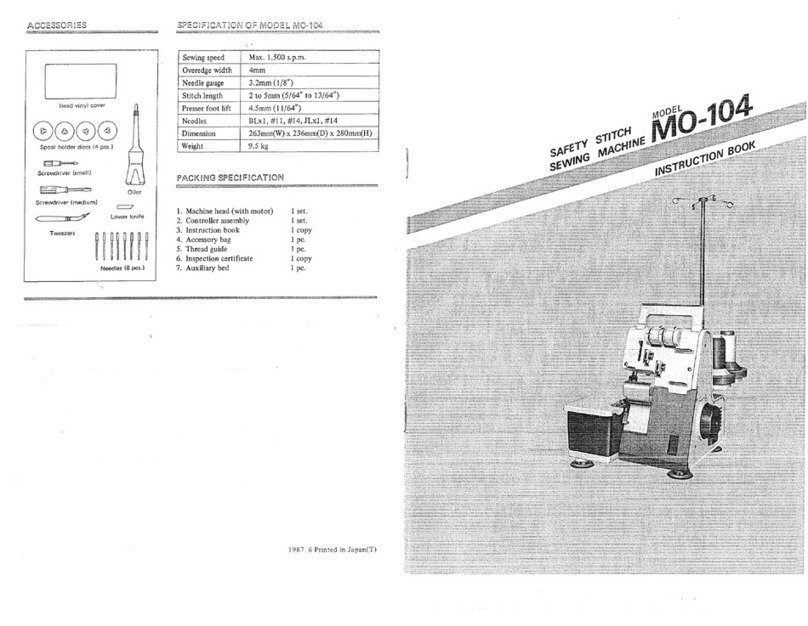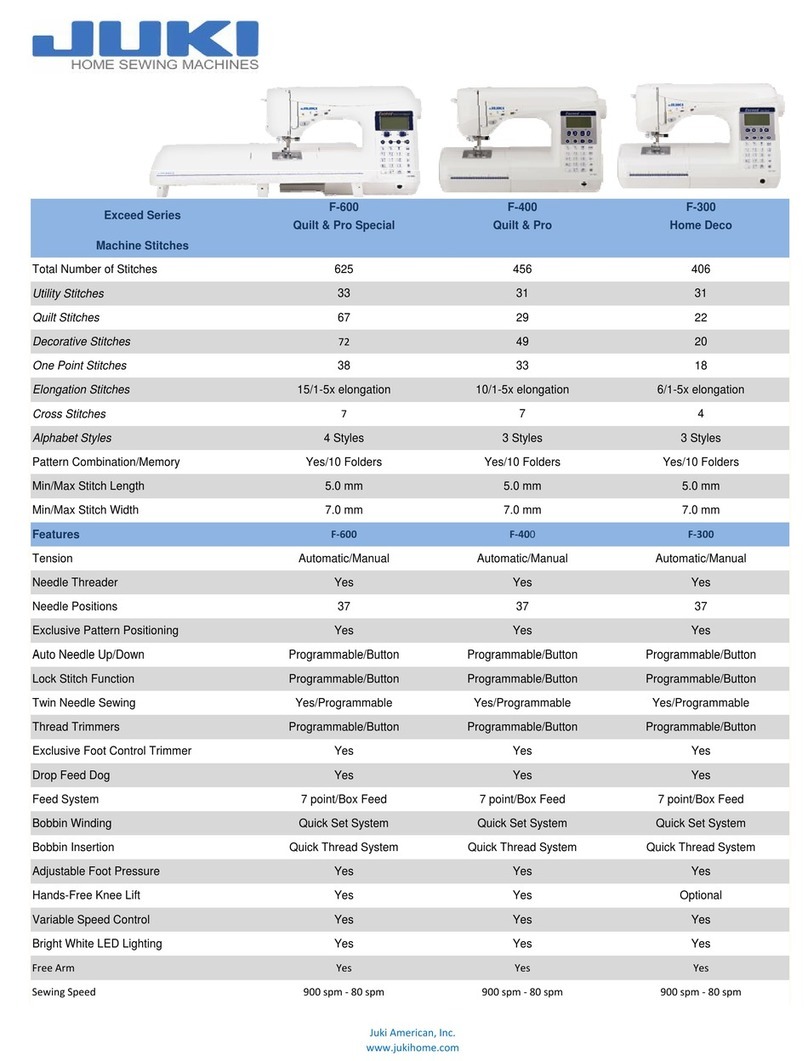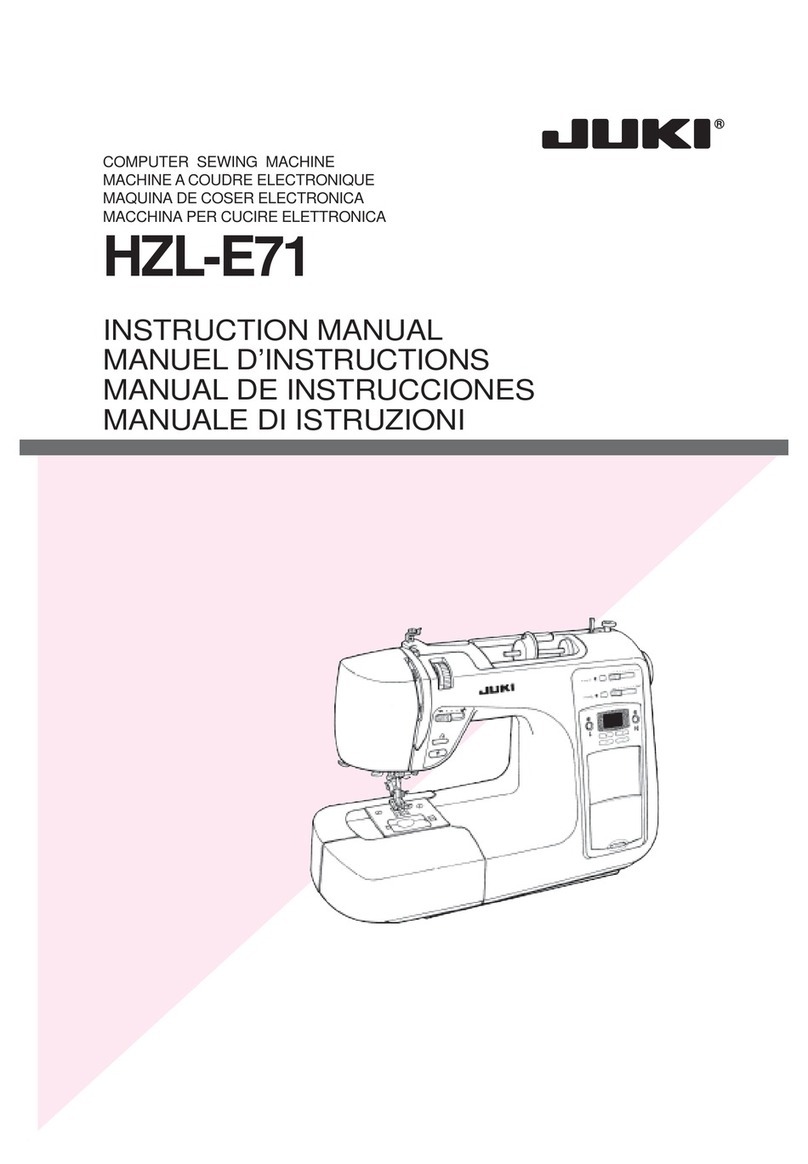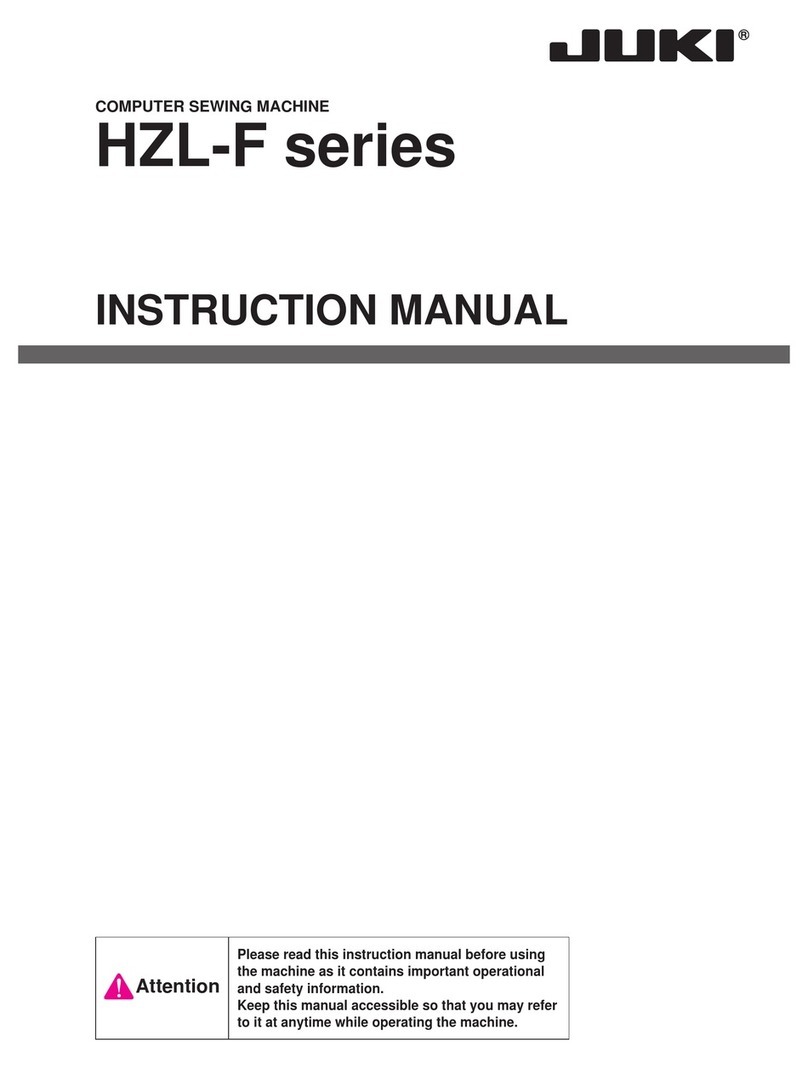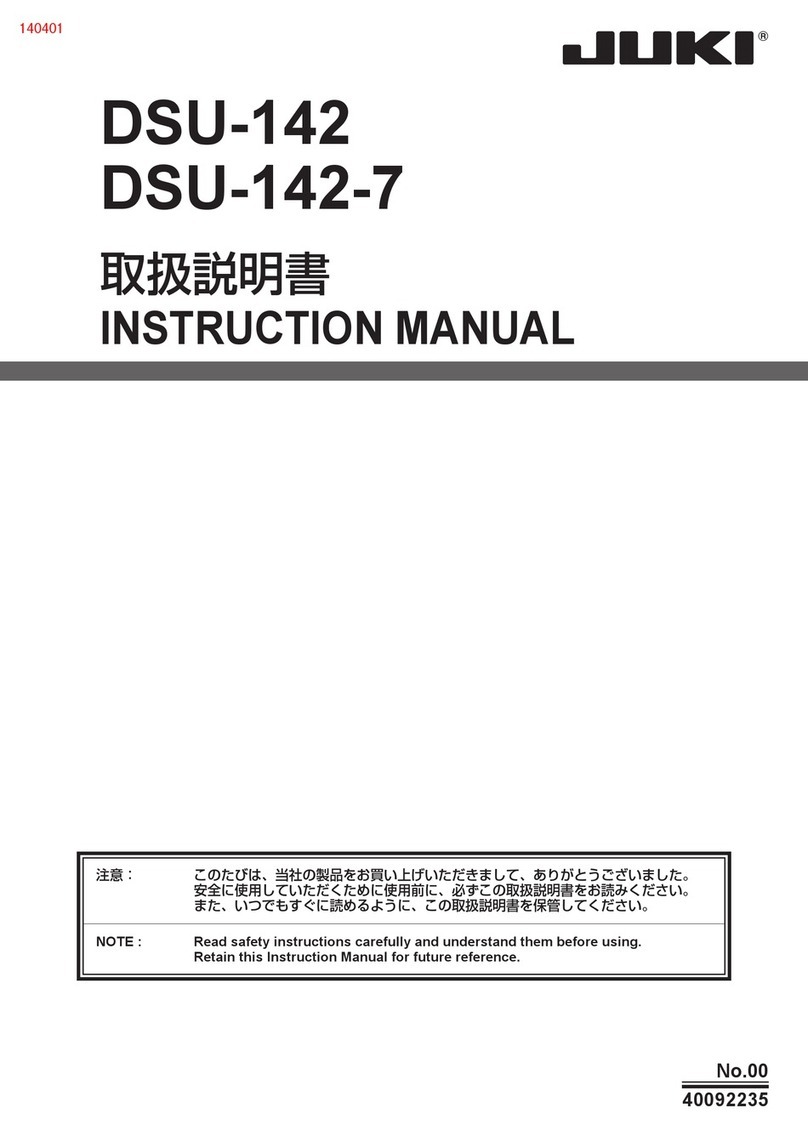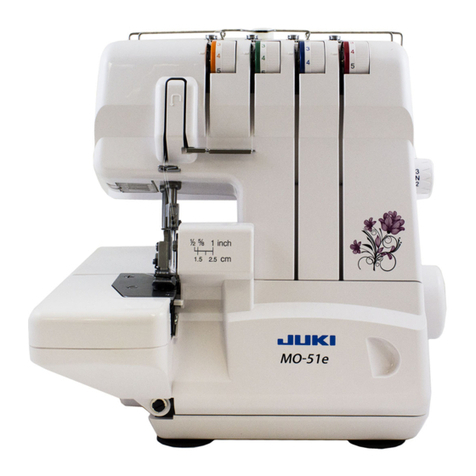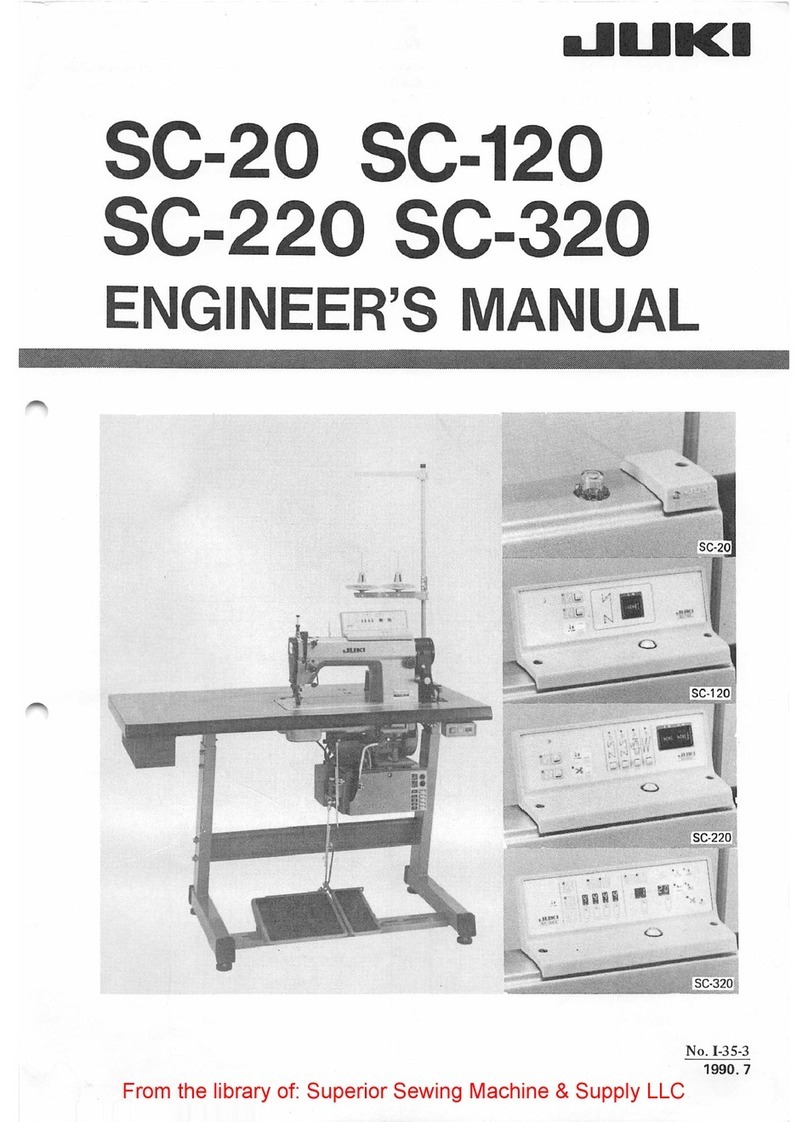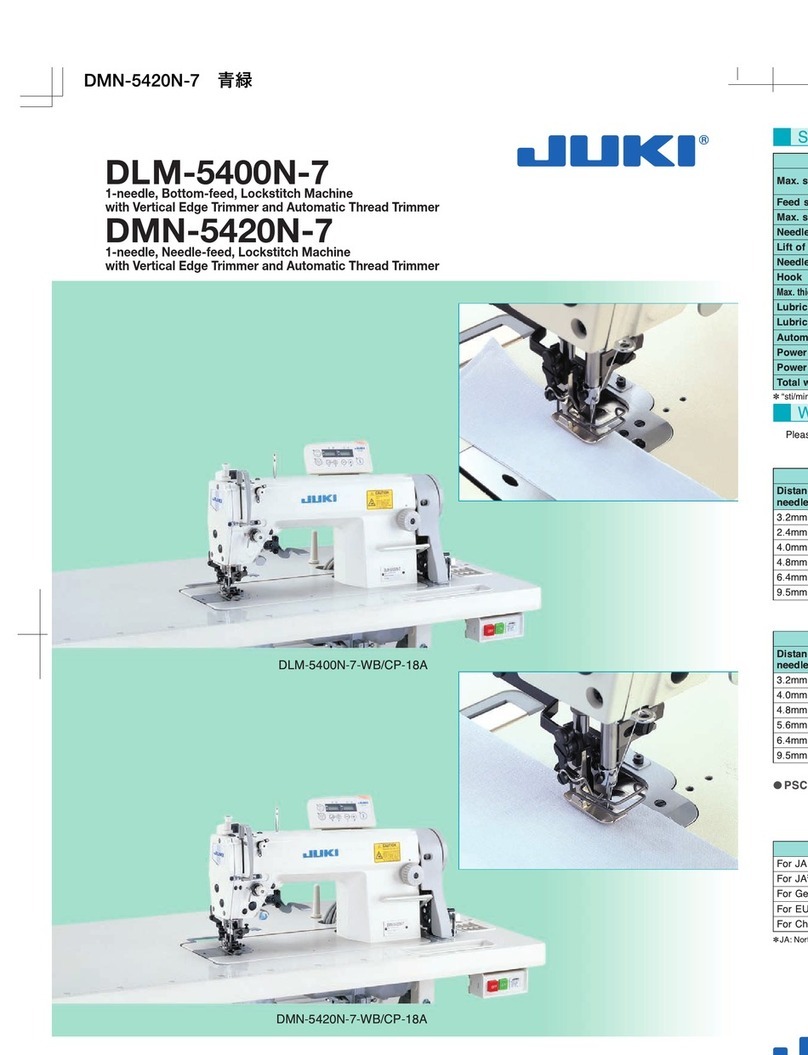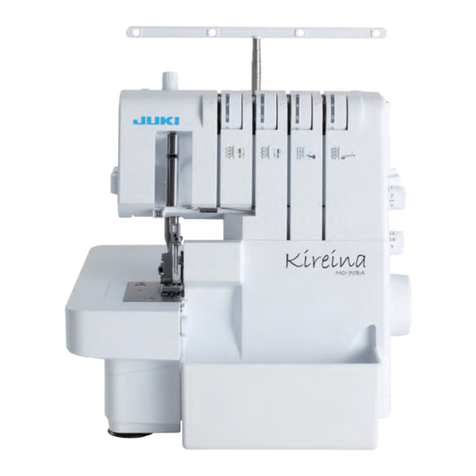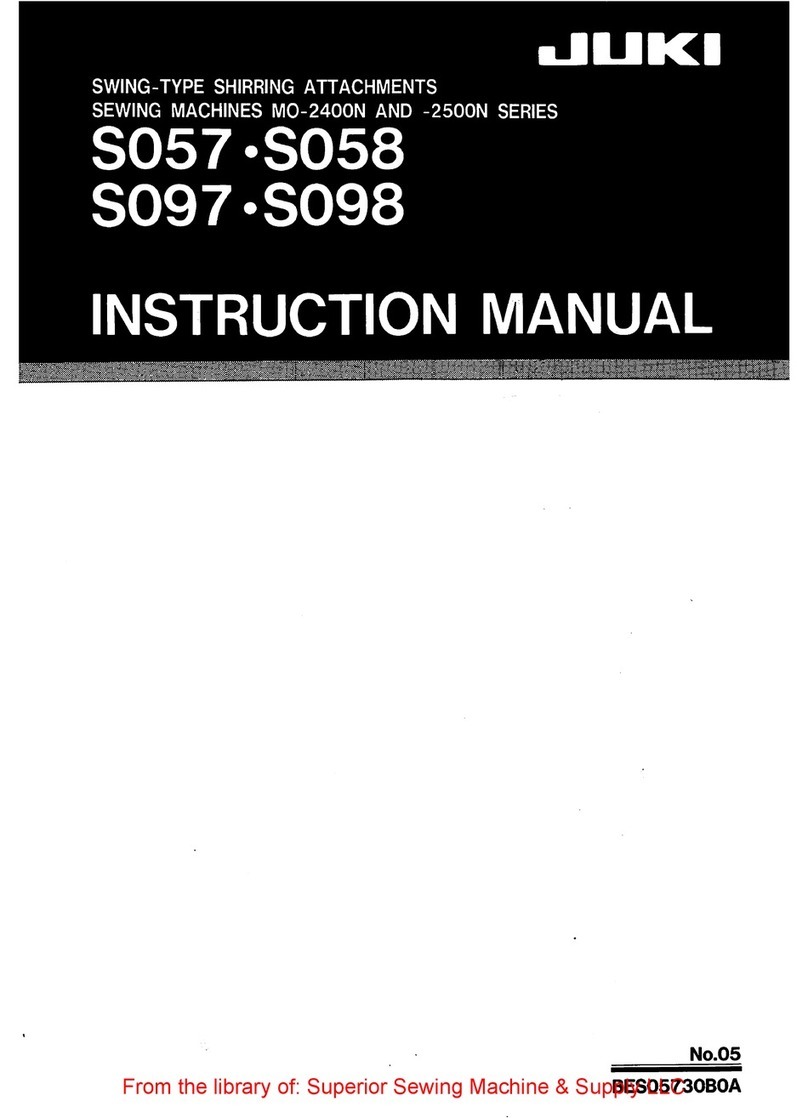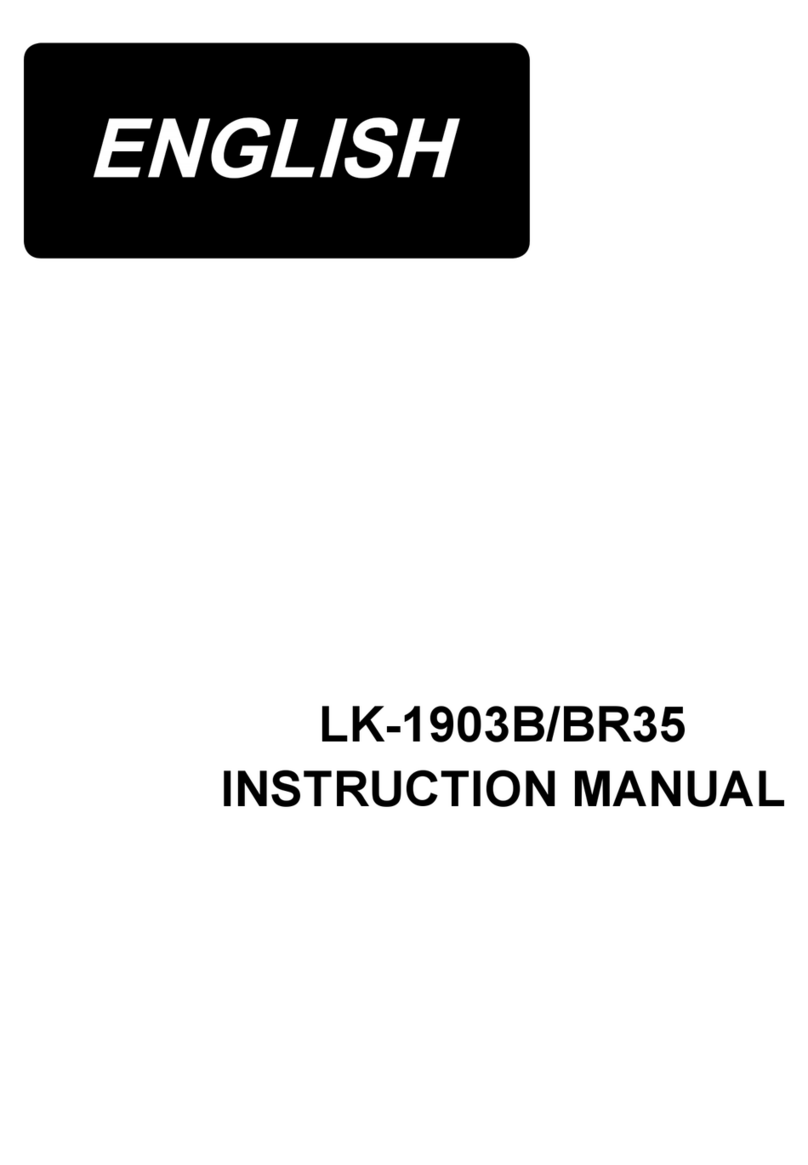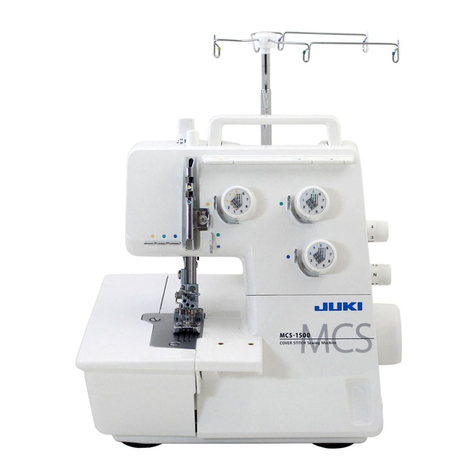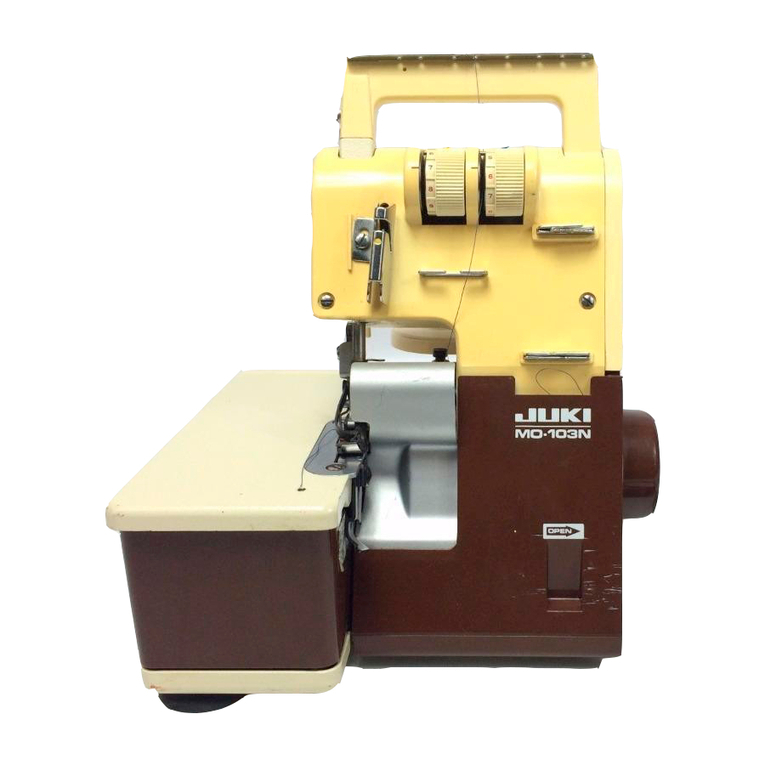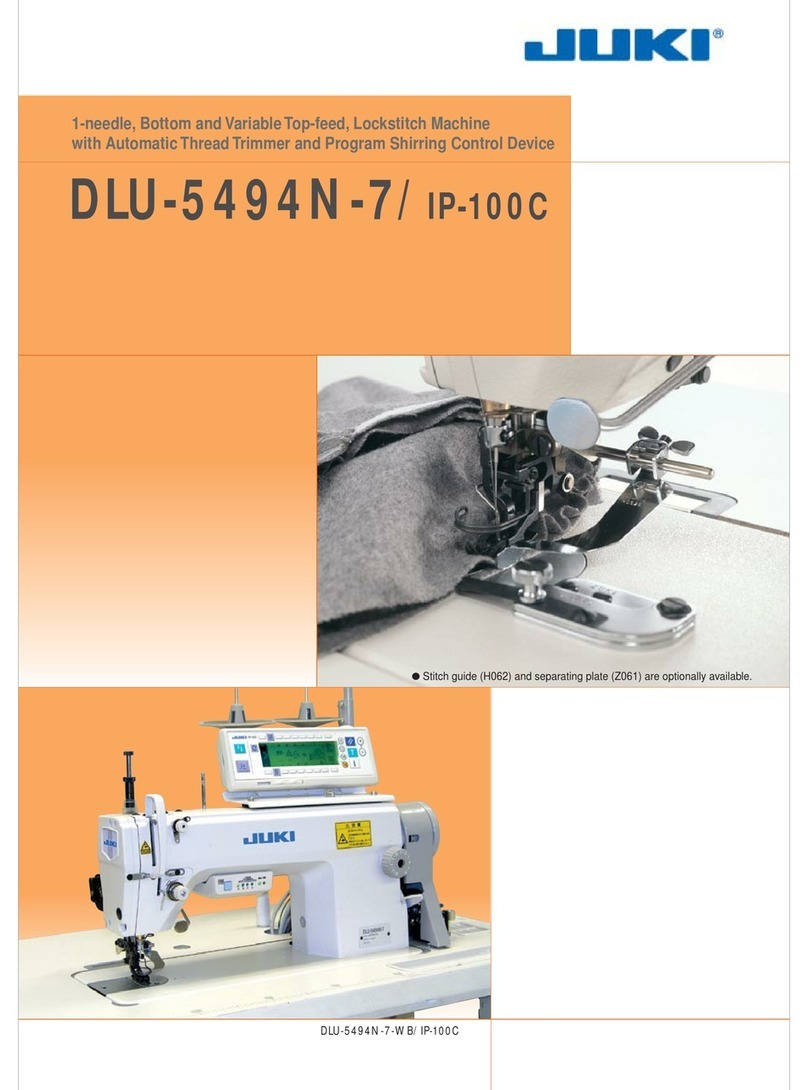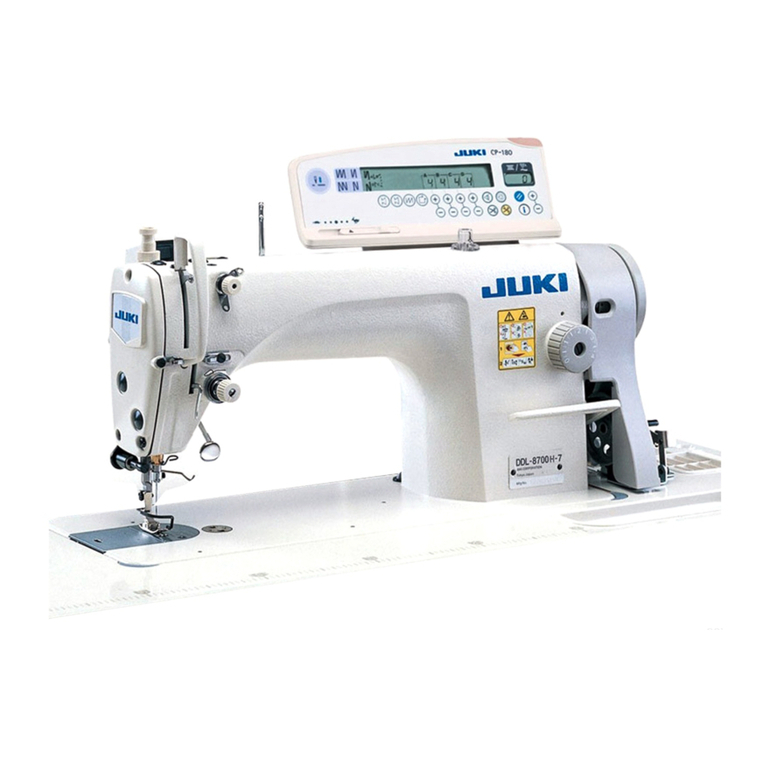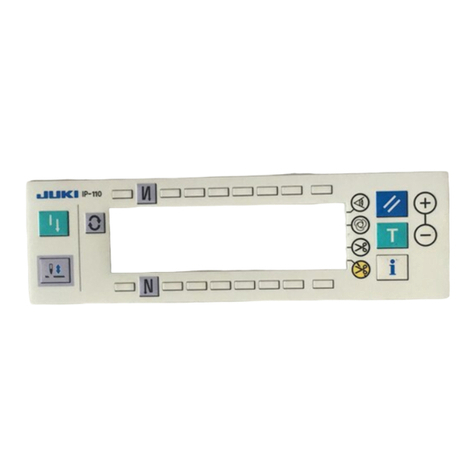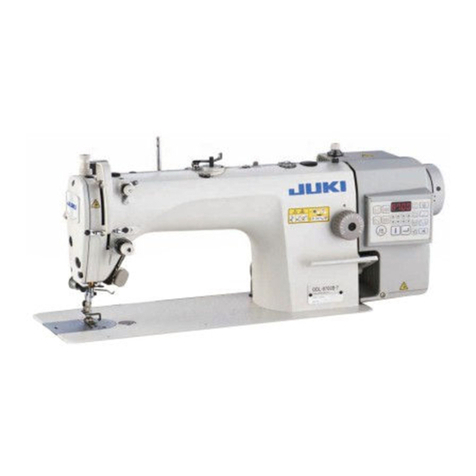
ii
CONTENTS
!. CAUTIONS BEFORE OPERATION ...............................................................................1
Precautions for use................................................................................................................................... 1
@. CONFIGURATION OF THE MACHINE..........................................................................2
#. OVERVIEW.....................................................................................................................3
1. Features ................................................................................................................................................. 3
2. Specications ........................................................................................................................................ 3
$. INSTALLATION ..............................................................................................................4
1. Table height............................................................................................................................................ 4
2. Auxiliary table ........................................................................................................................................ 5
3. Assembling the sewing machine table and auxiliary table ............................................................... 5
4. Installing the operation panel mounting plate.................................................................................... 5
5. Connecting the operation panel........................................................................................................... 6
6. Lubrication............................................................................................................................................. 7
7. Installing the thread stand.................................................................................................................... 7
8. Removing the covers ............................................................................................................................ 8
9. Threading the machine head................................................................................................................ 9
10. Adjusting the stitch length ............................................................................................................... 10
11. Fitting a needle .................................................................................................................................. 10
12. Loading the bobbin ........................................................................................................................... 11
13. Connecting and adjusting the air source........................................................................................ 11
%. INSTALLING THE OPTIONAL DEVICES ....................................................................12
1. Installing the 2-pedal unit ................................................................................................................... 12
2. Installing the stacker........................................................................................................................... 13
3. Installing and adjusting the bobbin winder ...................................................................................... 21
4. Assembling the thread breakage detecting device and setting of the operation panel ............... 23
5. Installing the bobbin thread remaining amount detecting device.................................................. 26
^. HOW TO USE THE OPERATION PANEL....................................................................33
1. Explanation about switches on the operation panel........................................................................ 33
2. Basic operation of the sewing machine............................................................................................ 35
3. Selecting a pattern .............................................................................................................................. 37
4. Winding a bobbin ................................................................................................................................ 38
5. Using the counter................................................................................................................................ 40
6. Changing the sewing data.................................................................................................................. 41
7. Using the initial value pattern ............................................................................................................ 42
8. Sewing data list ................................................................................................................................... 43
9. Copying a sewing pattern................................................................................................................... 50
10. Using the PATTERN REGISTRATION key........................................................................................ 51
11. Using the PARAMETER REGISTRATION key.................................................................................. 52
12. Performing the cycle sewing............................................................................................................ 53
13. Changing the memory switch data.................................................................................................. 55
14. List of memory switch data .............................................................................................................. 56
15. Setting the upper shirring................................................................................................................. 60
16. Setting the manipulator pressure .................................................................................................... 61
17. Using the teaching ............................................................................................................................ 62
18. Correcting the bottom feed amount readout potentiometer ......................................................... 64
